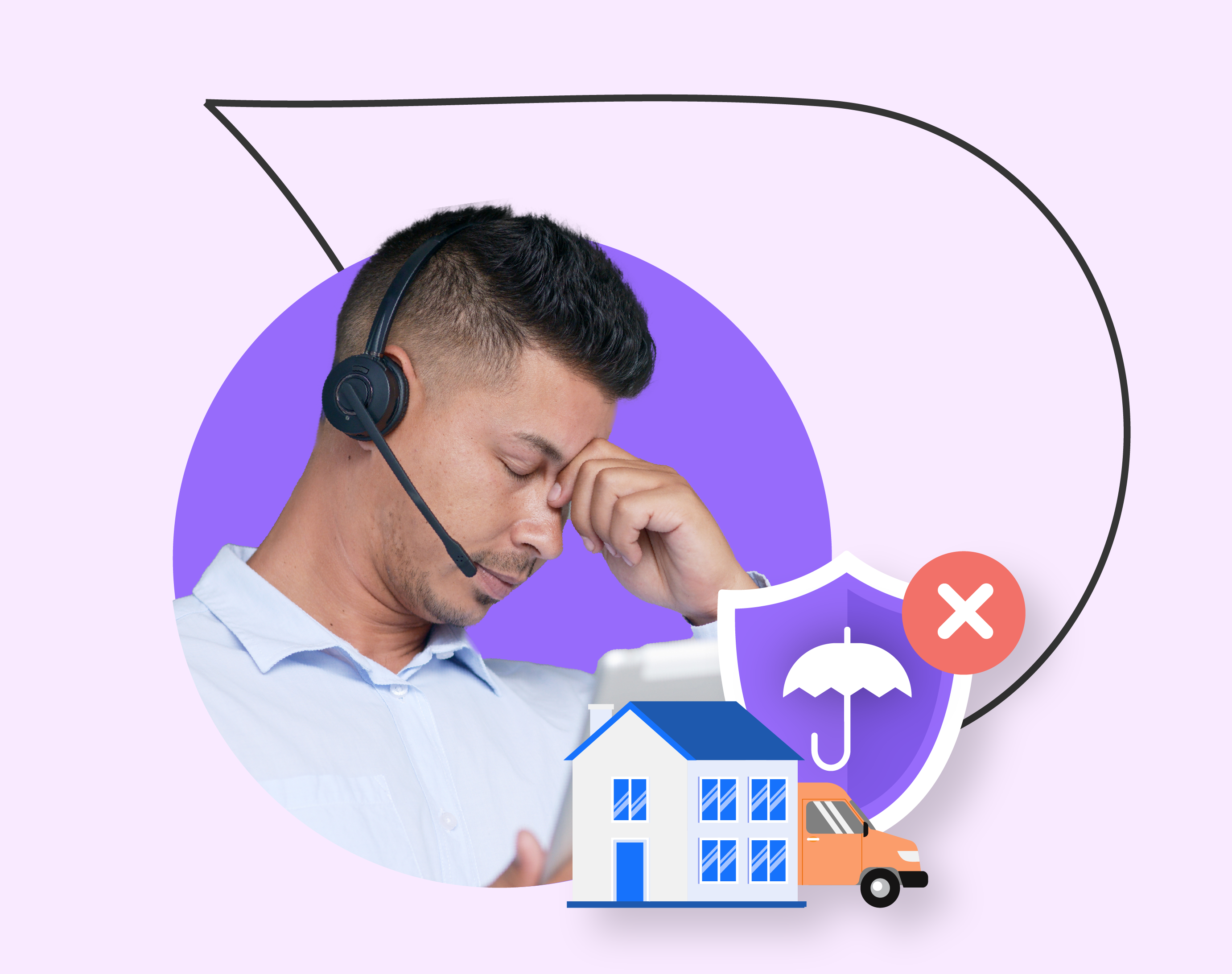Insurance Quotes Not Selling?
In the insurance industry, a useful metric to watch is the quoted-not-sold (QNS) rate. This term sometimes goes by other names like “quoted not converted,” “quoted not bound,” “leads not sold,” or “unsold leads.” The quoted-not-sold rate is the number of quoted customers who have not yet bound a policy divided by the total number of customers quoted during the same period. (Put another way, the quoted-not-sold rate is the inverse of the quote-to-bind conversion rate.)
To take an analogy from outside the insurance world, the quoted-not-sold audience segment is like abandoned cart customers in e-commerce. Just as abandoned carts signify potential purchases left incomplete, quoted-not-sold consumers reflect unrealized insurance policies.
The ability to get quotes from carrier websites is a key part of the customer journey for property and casualty insurance. According to McKinsey, this is true even among customers who ultimately purchase through an exclusive agent. About 60% of these policyholders gather quotes through direct channels like carrier websites before working with an agent (McKinsey).

While getting a quote is free and carries no commitment, the conversion rate from quote to policy is often low. According to one study, the insurance industry has the highest “cart abandonment rate” of any sector (Insurance Business Mag). In this article, we will explore the psychology behind quoted not sold, its implications for insurers and policyholders, and potential solutions to enhance conversion rates.
Understanding Consumer Behavior
When it comes to addressing quoted not sold, it’s crucial to understand the psychology behind this consumer behavior. Why do people go through the trouble of asking for a quote and then seemingly drop off the face of the earth?
Reasons That Quotes Don’t Sell
They Are “Just Looking”
First, people often seek insurance quotes out of curiosity and for price comparison purposes. Maybe they aren’t in the market for new coverage just yet, and they are just looking to be proactive while budgeting.
For some of these customers, their quote wasn’t going to sell no matter what, as they just aren’t ready. Ideally, you will want to learn when they will need coverage so that you can reach out at the right time. Or, you can start a drip campaign so that you are top of mind when they are ready.
Some of these customers are in the market, but they are only in the research phase. Their quotes can turn into sales, but your outreach needs to overcome their hesitation. That’s a good segue to our next reason for quoted-not-sold records.
The Choice Isn’t Clear
Another common reason why quotes aren’t selling is unclear communication. Policy details and coverage information can be complex and overwhelming for consumers. This can lead to hesitation about coverage adequacy or cost and cause the customer to be overwhelmed by the decision-making process.
Effective outreach from the carrier can overcome these issues and reduce the number of quotes not sold. In particular, personalized outreach is a great way to add value for the customer. In fact, 88% of insurance customers demand more personalization from providers (Voxco).
They Already Chose A Competitor
This is the most dreaded reason for losing a sale from a quoted customer. If they already bound a policy with another carrier, then they usually won’t respond to you no matter how hard you try to reach them.
There are many reasons why the customer may have chosen a competitor, and sometimes it simply means that your product wasn’t a good fit for them. However, sometimes the issue is that they didn’t hear from you fast enough. One study found that 78% of customers choose the company that responds first (LeanData). It’s not easy to provide personalized outreach within minutes of a quote, but doing so can drastically reduce the quoted-not-sold rate.
Implications For Insurers And Policyholders
A high quoted-not-sold rate can have significant implications for both insurers and customers. For insurers, this rate indicates inefficiencies in the sales funnel, resulting in missed revenue opportunities. It highlights the need to streamline the quoting and conversion process to maximize policy binding and revenue generation.
On the customer side, those who ask for quotes but don’t get insurance could be missing out on needed coverage or better deals due to not finalizing the policy. Additionally, delays can lead to gaps in coverage, leaving them vulnerable to unforeseen events.
Engaging Quoted-Not-Sold Consumers
Engaging quoted-not-sold consumers requires a strategic approach to help overcome their hesitations and encourage policy binding. There’s a lot to be said about how to convert more quoted customers, but let’s start with the high level.
Enhance Communication
Effective communication is key to getting more quotes to turn into sales. Insurers must provide clear and concise information to help consumers understand policy details and ultimately choose the policy that meets their needs. It’s important to proactively communicate before, during, and after the quote. By refining value propositions and effectively addressing pain points, insurers can highlight unique benefits and demonstrate how their policies can meet the specific needs of customers.
Streamline The Process
Unfortunately, getting insurance will never be as quick and seamless for customers as buying a T-shirt online or ordering take out from an app. But that doesn’t mean carriers can’t make the process easier. It’s worth it, too: One study found that a good user experience (UX) can increase conversion rates by as much as 400% (Eleken).
Creating a more streamlined experience can mean a lot of things. It could involve removing unnecessary fields from the enrollment form. It could mean adding helpful tooltips to your website that explain unfamiliar terms. In terms of bigger lifts, insurers could see big value by making more of their processes digital and mobile-friendly.
Respond Faster
As we mentioned before, 78% of customers end up choosing the company that reaches them first. While it may not always be possible to call every customer immediately, there are ways to let them know you are ready to work with them. A simple auto-response text or email can go a long way. For better results, a more interactive solution like Conversations as a Service can increase conversions even more.
Engage Quoted Customers At Scale
62% of consumers shopping for insurance say that speaking to an agent is the most influential factor in their purchasing process (Podium). But a phone call isn’t always the best way to start the conversation. For one, there’s a high chance the customer will be at work or otherwise busy when you decide to call. What’s more, 80% of consumers won’t answer the phone if they don’t recognize the number (Pew Research Center).
This is why Drips is a proven innovation to turn quoted-not-sold contacts into happy policyholders. Drips starts real conversations with quoted customers using SMS messages which are specially crafted to elicit a positive response. Because we opt for SMS over a phone call, customers can read and reply any time, at the pace they are comfortable with. Then, we continue the conversation using our AI-powered platform to answer questions, share educational resources, and ultimately drive to a call or website action to finalize the policy.
This customer-centric outreach strategy has proven effective to drive higher conversion rates for insurance. When AIS partnered with Drips to reach quoted-not-sold customers, they doubled the rate that prospects transferred to a valuable scheduled call with an agent.
If this sounds like an interesting solution for your insurance audience, read the full case study here.
Quoted-not-sold customers are a common challenge in the insurance industry. Understanding consumer behavior, addressing their concerns, and implementing effective outreach strategies can significantly reduce the quoted-not-sold rate and increase policy conversions. By prioritizing clear communication, a fast speed to lead, and streamlined processes, insurers can create a seamless and engaging experience for customers. With the right approach, insurers can convert unsold records into valuable policyholders.




.png)


-Thumbnail.png)